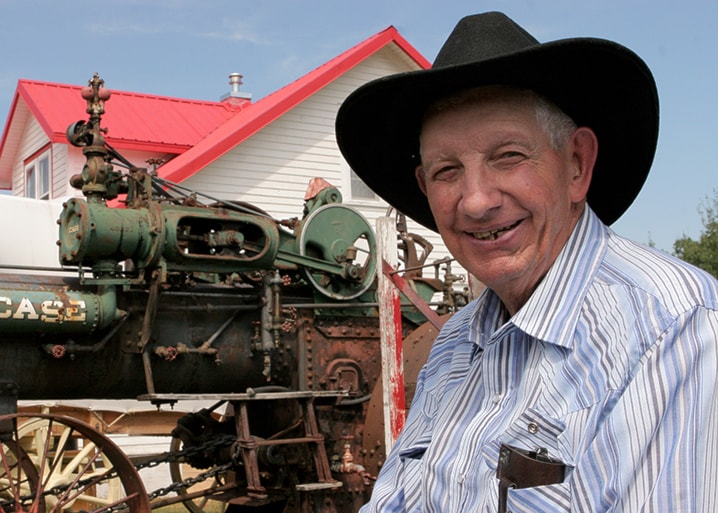LESLIEVILLE — Earth dwellers have heard varying versions in recent days of the impact storms on the sun would have on our planet. Those versions range in tone from “no worries” to dire predictions of utter destruction.
Somewhere in between are recorded incidents of disruptions to satellites and communications systems and massive breakdowns of electrical grids, including the power surge that shut down Quebec’s power grid in March of 2009.
Depending on whose version you believe and assuming that the sunny side of the planet does not fry, how well prepared are you for a massive power outage, perhaps coupled with a breakdown of communications systems and sensitive electronics?
“Not very,” say people gathered for the Leslieville Antique and Model Club’s annual show and festival during the past weekend.
Set up on donated land east of the hamlet, the club continues to amass a collection of machinery, building and tools created in an era when people in developed regions were making the transition from horse power to steam, diesel and gas.
Water wells and creeks doubled as refrigerators, vegetables and berries were preserved in quart sealers, wood and coal fired the stoves and water was drawn by hand or by the power of the wind.
Most of the tools to perform those tasks exist in the Leslieville club’s collection, but there are very few people who know how to use them, say those do.
Octogenarian Lawrence Stewart, born in Stettler at the start of the Great Depression and now living in the rural area near Strachan, said he has had to step in on a number of occasions during Leslieville Antique Days, when inexperienced hands have tried in vain to fire up the wood cookstoves.
Some have tried to light the fire in the oven itself, while others failed to recognize the functions of the various dampers needed to get the fire started and then manage the flow of heat without filling their kitchens with smoke and driving everyone outside.
He says he has reached an age where he would be unable to work in his shop or on his farm without the use of power tools and a good tractor.
There was no power in 1956, when he and his wife bought their farm. He dug a hole in the ground on the north side of a hill for cold storage and his wife and mother-in-law canned all of their meat, including moose.
Mixed with a bit of milk and some potatoes, canned moose makes a really great hash, he says.
Marilyn Studer, whose family farms in the Stauffer area, says they are now growing or raising almost all of their own food and are learning to drive horses and oxen for transportation and field work.
Waiting until the power goes out is waiting to long to learn how to function without out it, says Studer
If the cell networks fail, there will be no way to ask Google for help, she says.
As she speaks, her hands are gently kneading and squeezing a wet clump of curds and whey that will eventually form into a nice wheel of mozzarella cheese. It will be ready tomorrow, says Studer as she mixes cumin and fresh dill weed into the curds.
Milking a cow doesn’t require electricity, but very few people have a cow or would know how to get the milk if they did, says Studer.
“We have, in this generation, 80 per cent of people living in cities and they’re very vulnerable because they have no way to grow food,” she said.
“It would be like in the 30s.”
A few metres away, Antique Days volunteer and former schoolteacher Glenda Anderson takes a seat at the front of the class in the one-room school where she spend a portion of her childhood. Her dad was one of the first students in the Shady Lane School in 1913 when it was first built, a few kilometres southeast of the grounds where it now sits.
There was no electricity in the school, says Anderson. The students helped bring in wood to keep the fire going in a pot-bellied stove at the back of the room and light streamed in through the tall windows lining both sides of the building. Water was pumped by hand from a rusty well outside.
Anderson had moved away for a few years as a young teacher and eventually returned to the family farm where she now lives.
There was no electricity on the farm until 1968. The house that’s there now is as up to date as any. Candles, coal-oil lamps and wood heat are available if needed. The only drawback, says Anderson, is that there is no way to draw water without power for the pump.
That’s pretty much the story for anyone living in the country now, says club president Howard Dell. He recalls griping about the price of electricity with a friend, who turned the tables and asked him where he’d be without it.
There would be no power to pump gas, no way to use credit and debit machines, no motors for manufacturing things, no lights and no fans to running heating and cooling systems.
“You can’t do one thing without it,” said Dell.
bkossowan@www.reddeeradvocate.com
